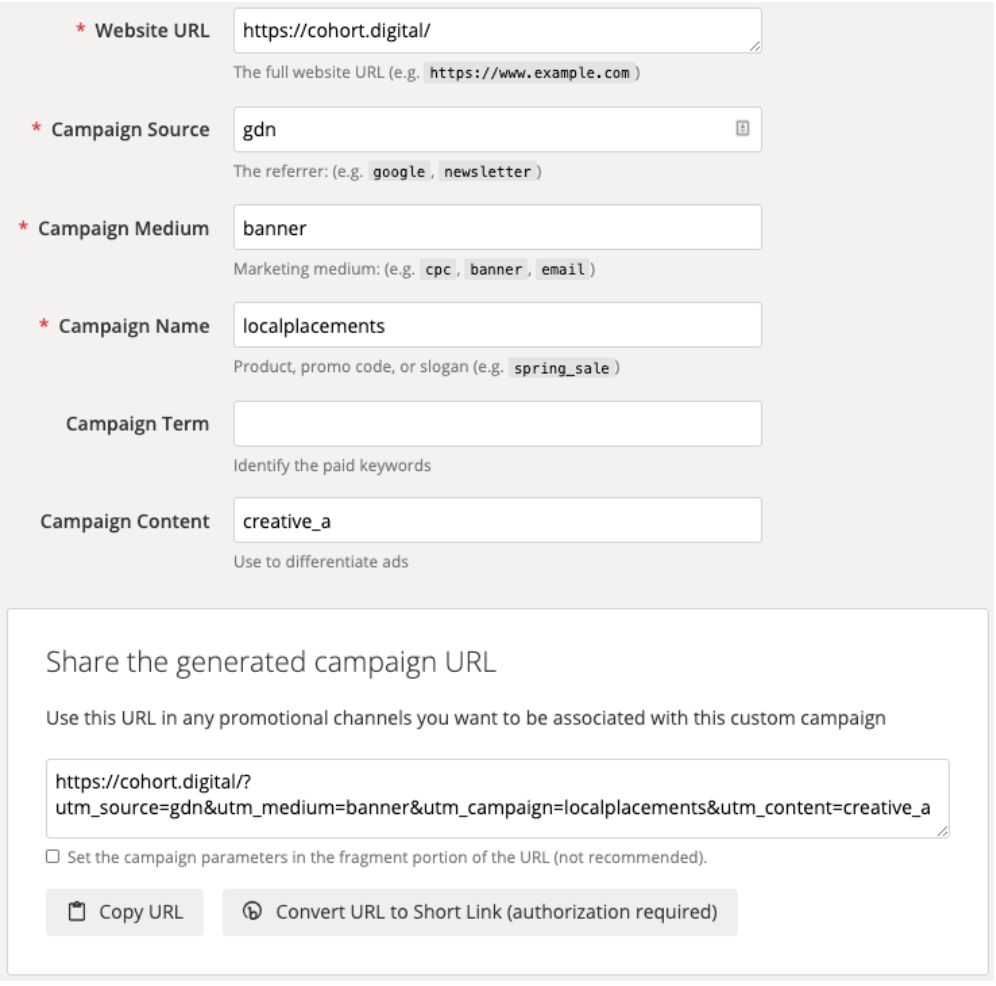How to Effectively Track Your Digital Campaigns

If you’re running a digital campaign, using UTM tags will tell you how your campaign is performing, which channels are performing best and help you better understand your end user to help make your website stronger. When someone visits your site, Urchin Tracking Module (UTM) takes a look at the gobbledegook (yes, that’s the official term!) at the end of your url and helps your website understand how people got there. It’s helpful information for you as the website owner to have, while also keeping the personal information of your site visitors anonymous.
So, why do you want this information, and what can you do with it? By putting UTM tags in place, you’ll uncover where all of your best web traffic is coming from, how much time visitors spend there and why. You can use this information to more accurately and narrowly target future digital campaigns, or pivot for increased success in your current efforts. All of this is available to you with a little time and back-end knowledge of Google Analytics.
Here’s how to set it up: to ensure as many inbound links to your website are trackable within Google Analytics as possible, cohort.digital suggests using Google’s Campaign URL Builder Tool to make each link unique. You simply enter the landing page URL and provide inputs for the other parameters. After the three required parameters are populated, Google will provide a dynamically generated link at the bottom of the Builder. We’ll walk you through an example in this post.
Here’s a quick guide to understanding the parameters:
Campaign Source – This identifies the traffic source, for example: Google, Facebook, Eagle Communications, newsletter name, etc.
Campaign Medium – This identifies the type of traffic it is, for example: cost-per-click, banner ads, video, email, etc.
Campaign Name – This identifies the campaign or promotion the link is associated with.
Campaign Term – This parameter is used primarily for paid search campaigns showing which keywords generated the traffic. (If auto-tagging is set up, it will automatically pull through.)
Campaign Content – This parameter can be used to identify the ad creative or call-to-action used to help test effectiveness of different options.

That’s it! Just snag this link once it is created, and you can use it for any of the inbound links you’re placing in your digital marketing materials, like newsletters, google ads, or in organic social media.
A few things to remember as you’re setting this up:
- Keep it simple. Don’t use spaces or special characters in your parameters. It can mess the URL string up and won’t track correctly.
- Embrace lowercase. (all the cool kids are doing it!) Tags are case sensitive, so it’s best to use all lowercase to ensure parameters line up in Google Analytics. Otherwise you’ll get data for “Email” and “email” separately. With a little knowledge of relative expressions and advanced Google Analytics functionality, you can interpret this data, however, simplicity and lowercase help to keep things clean and remove the guesswork.
- Less is best. While Google offers five parameter options, it’s best to only use the ones you really need. More data is not always better – it just results in more to comb through to find the useful nuggets. Additionally, it will increase the length of your URL and the likelihood that something in the string will be messed up as it’s transferred from creation to implementation over time.
- Stay organized. Keep a spreadsheet that denotes the naming conventions you’re using so that you can stay consistent over time. This will keep your data neat and allow for maximum slicing and dicing when it’s analysis time.
We try to always put ourselves in the shoes of our partners and clients and think through the real scenarios they’re facing to better help them succeed. If you want to better demonstrate the effectiveness of your digital marketing efforts, UTM tags are a relatively simple tool to put in place that can provide added insight to your measurements, tracking and reporting.
Go forth. Go digital.
-cohort.crew



